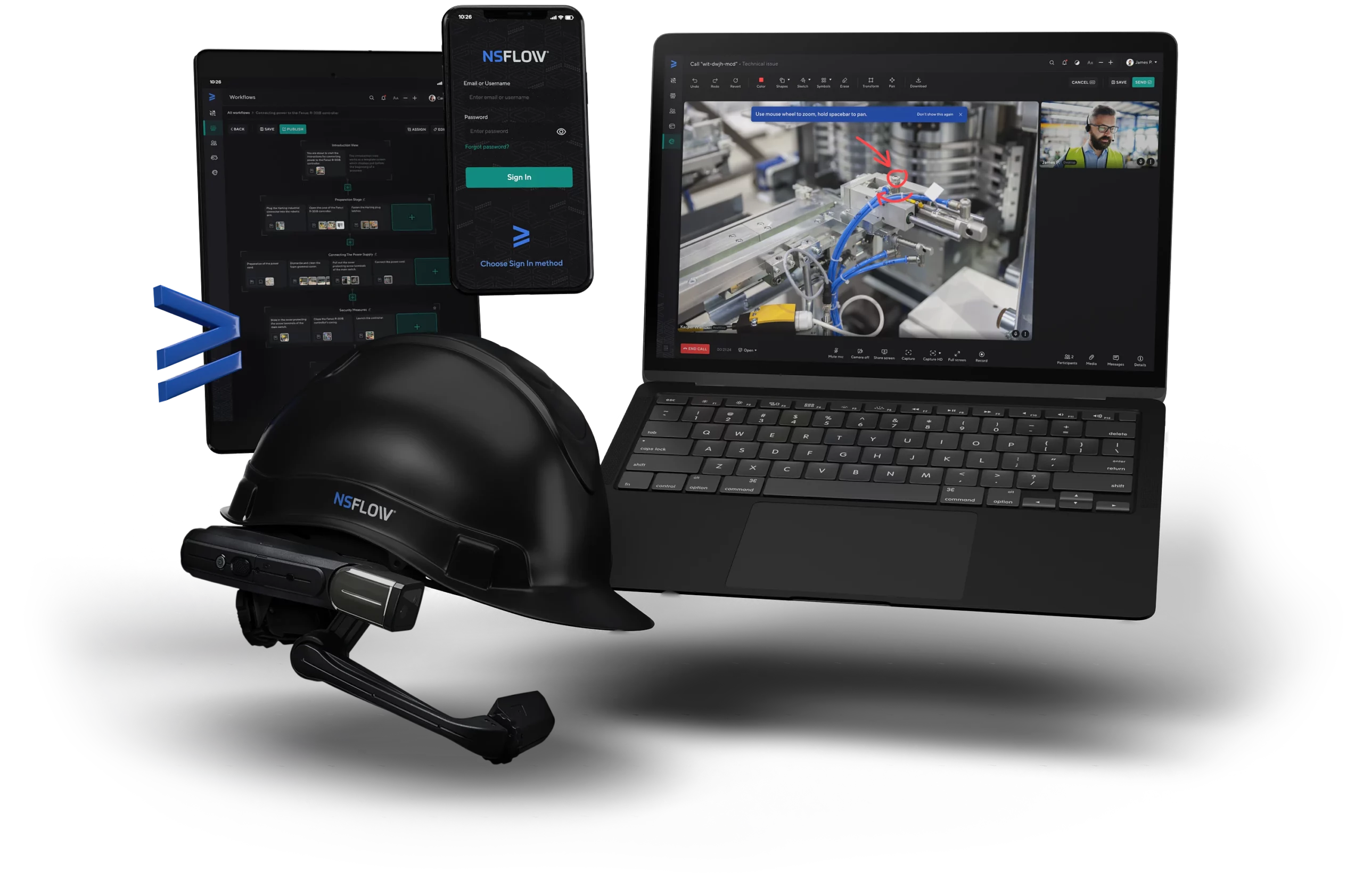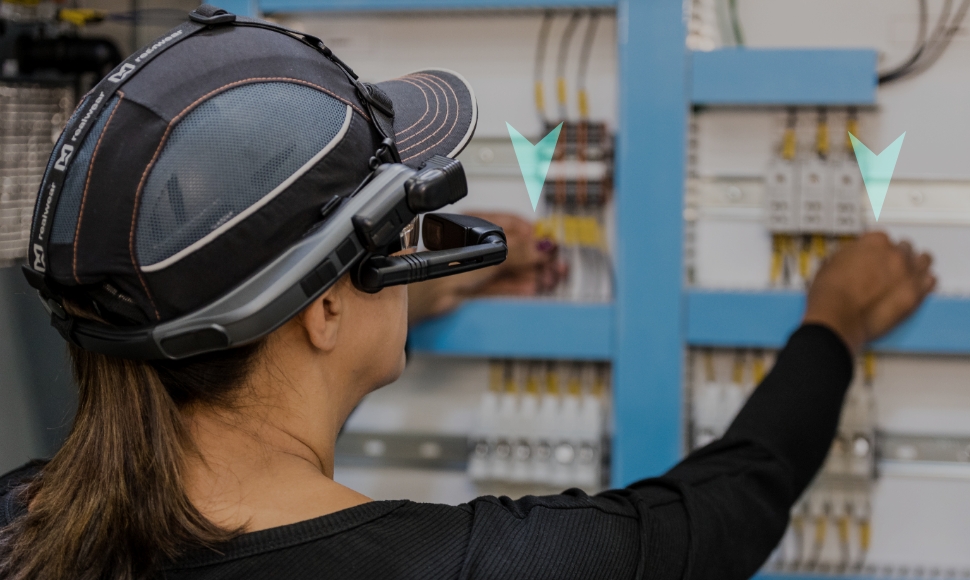We’re aware that it is virtual reality that gets all the glitter and glory, whereas augmented reality stays somewhat in the shadows. The reason is simple, VR looks more spectacular than AR, especially since it is used more frequently in the gaming industry.
However, when it comes to business all that glitters is not gold. Thus, today, we’d like to explain why we dote on augmented reality mainly (although if you wanted to use VR with our platform, we wouldn’t say no, and we’ve got such use cases in our portfolio as well).
What is augmented reality?
Augmented reality is a relatively new technology that has come a long way from sci-fi concepts (the grandiose idea mentioned in 1901 by American author Frank L. Baum) to properly functioning systems (in the nineties).
Augmented reality combines real and virtual worlds, allows users for real-time interaction with them, and accurate registration of both real and virtual objects at the same time. What is often highlighted is the immersive aspect of digital elements. Unlike virtual reality (VR), which presents a purely computer-generated world, augmented reality doesn’t shut the user off from the outside world. Only altering the real world, it allows them to perform real actions. AR is often accompanied by computer vision and object recognition technologies to open up even more possibilities.
Advantages of augmented reality
Advantages of the AR technology in the business environment lie primarily in:
- Contact with the real world – employees see what is happening around them, can work freely, and react swiftly to changes and possible hazards taking place; end customers can visualize products in the target environment
- The possibility to reflect all details, behaviors, and imperfections of the outside world – crucial in employee training, service procedures, etc.
- The ability to interact with real machinery or products – used in employee training, remote collaboration, product previews, virtual try-on tools
- A significantly lower cost in comparison to virtual reality.
All the above make AR a perfect solution for business applications, supporting employees and clients in their daily endeavors and choices.
The potential of augmented reality usage
Just a few years ago, augmented reality was associated mostly with the entertainment sector. However, the AR market potential grows every year, and currently, the technology is eagerly used in highly specialized industries as well, such as manufacturing, construction, aerospace, automotive, medicine, and logistics. The global augmented reality market is estimated to be worth $198 billion by 2025 (per: Statista). Together with virtual reality, artificial intelligence, and the internet of things (IoT), AR is identified as one of the fastest developing technologies.
Changes taking place concerning Industry 4.0 result in a search for solutions to improve efficiency, quality, and inventiveness of products or services. The demand for highly qualified experts grows, and their high turnover – imposes a reduction of time necessary to train employees. Increasingly, augmented reality offers a solution to all of these problems.
Augmented reality use in industry
We are witness to unparalleled changes taking place in industrial production. The shifts apply not only to the way processes are performed but also to better, more organized management of resources. Since industry encompasses a lot of high-risk areas, such as mining or oil & gas, accidents can have far-reaching and severe consequences. Thus, AR support can mean a lot for safety, competitiveness in the market, and potential crisis survival.
AR training
In the face of relatively high employee turnover and retirement rate, training has to be effective and as fast as possible. Augmented reality makes learning by doing more accessible:
- Onboarding – an essential step for every new hire that can be easily automated when it comes to getting to know the company, its procedures, and machinery
- Practical training, including on-the-job training – AR makes it possible for employees to undergo professional training with no or minimal instructor involvement; the AR system can guide trainees step by step and even verify their performance
- Knowledge retention and standardization – with AR training companies can finally unify employee skills throughout all their plants; employees become independent from particular experts’ know-how; expert knowledge can be stored in the form of digital workflows for the next generation of employees

presentation to try
Nsflow in action
Daily support
Augmented reality can play a fundamental role in supporting employees in their daily work. It is particularly important for risk reduction and downtime minimization. It can take the form of:
- Remote consultations with experts – Remote Support with AR glasses offers immediate help to those working with machinery; thanks to the ready-made module they don’t have to wait for hours or days for help to come
- Interactive checklists and maintenance procedures – with AR checklists no steps will be left out or forgotten; what’s more, there’s no need to make lengthy notes documenting maintenance anymore
- Instructions for solving common failures – the fastest way to solve simple problems is to help regular employees to do it; with AR support they can easily perform actions that have been prepared beforehand by experts
- Constant and easy access to documentation – no more searching for paper manuals, with AR they can be stored in the system so information needed is easy to find
- Presentation of data from other systems, e.g. SCADA, MES, ERP, CRM, PLM – looking for information, employees don’t have to switch between systems, everything can be displayed in front of their eyes while performing their tasks.
Tasks executed remotely
Remote started to characterize the Covid times, and it has been slowly adopted by the industry as well. Just have a look at the following examples:
- Remote inspection and maintenance of machines
- Remote audits
- Remote FAT (factory acceptance testing).
Security and quality
Last but not least, AR can improve the security of industrial processes and quality of products manufactured. It is possible thanks to:
- Task verification performed by the system – thanks to sensors and cameras mounted in the plant, images from AR goggles, machinery 3D models, hand tracking, sound intensity analysis, etc.
- Quality assurance – modern systems can verify parts and final products automatically and accurately, working 24/7
- Predictive maintenance of machines – based on atypical machinery behavior detection, past events analysis, worker behavior, etc.
- Digital twins – visualization of machines in the target factory, working with digital representations first before building costly prototypes.
Time will tell which technology – augmented or virtual reality – will be at the top of the business game (and if our bet on AR was right).


















